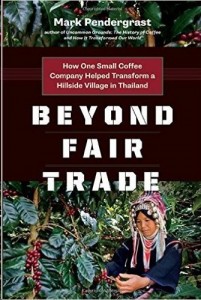Systematic Review of Pears and Health. Holly Reiland, BS Joanne Slavin, PhD, RD. Nutrition Today November/December 2015 – Volume 50 – Issue 6 – p 301–305. doi: 10.1097/NT.0000000000000112.
- Conclusions: Animal studies with pears suggest that pears may regulate alcohol metabolism, protect against ulcers, and lower plasma lipids. Human feeding studies with pears have not been conducted. In epidemiological studies, pears are combined with all fresh fruits or with apples, because they are most similar in composition. The high content of dietary fiber in pears and their effects on gut health set pears apart from other fruit and deserves study.
- Funding: The authors received a grant from USA Pears in the past. The authors provided their own funding to allow this article to publish as Open Access.
- Comment: Pears are a great fruit but the marketing purpose of this study is evident from this press release from the Pear Bureau Northwest: “While the body of evidence connecting pear intake and health outcomes is still limited, USA Pears has been contributing to research efforts by commissioning independent studies to learn and affirm the heath attributes of pears. Visit www.usapears.org for additional pear research, nutrition resources and recipes.”
Whole Grain Intakes in the Diets Of Malaysian Children and Adolescents – Findings from the MyBreakfast Study. Norimah AK , H. C. Koo, Hamid Jan JM, Mohd Nasir MT, S. Y. Tan, Mahendran Appukutty, Nurliyana AR, Frank Thielecke, Sinead Hopkins, M. K. Ong, C. Ning, E. S. Tee. PLoS ONE 10(10): e0138247. doi:10.1371/journal.pone.0138247
- Conclusion: Whole grain is consumed by only a minority of Malaysian children and adolescents and even among consumers, intakes are well below recommendations. Efforts are needed to firstly understand the barriers to whole grain consumption among Malaysian children in order to design effective health promotion initiatives to promote an increase in whole grain consumption.
- Funding: The Nutrition Society of Malaysia received an unrestricted research grant from Cereal Partners Worldwide, Switzerland and Nestleé R&D Center, Singapore. This financial support was provided in the form of salaries for authors but the funders did not have any additional role in the study design, data collection and analysis or decision to publish. Frank Thielecke was an employee of Cereal Partners Worldwide at the time this study was conducted. He now works for Nestec SA. Sinead Hopkins is employed by Cereal Partners Worldwide (CPW), Switzerland and Moi Kim Ong and Celila Ning are employed by Nestleé R&D Center, Singapore….Nestlé and Cereal Partners Worldwide have a commercial interest in breakfast cereals.
- Comment: I learned about this study from a comment on Retraction Watch, which reported that PLoS One had filed a correction to the funding section. The correction says that the salaries were for research assistants, not authors.
Walnuts Consumed by Healthy Adults Provide Less Available Energy than Predicted by the Atwater Factors. David J Baer*, Sarah K Gebauer, and Janet A Novotny. J Nutrition First published November 18, 2015, doi: 10.3945/jn.115.217372.
- Conclusion: Consistent with other tree nuts, Atwater factors overestimate the metabolizable energy value of walnuts. These results could help explain the observations that consumers of nuts do not gain excessive weight and could improve the accuracy of food labeling.
- Funding: This research was funded by the USDA and the California Walnut Commission… DJ Baer was funded by the USDA and the California Walnut Commission.
Cardiorespiratory Fitness, Body Fatness, and Submaximal Systolic Blood Pressure Among Young Adult Women. Prasad Vivek Kumar, Drenowatz Clemens, Hand Gregory A., Lavie Carl J., Sui Xuemei, Demello Madison, and Blair Steven N. Journal of Women’s Health, 2015 ahead of print. doi:10.1089/jwh.2015.5307.
- Conclusion: CRF, BF%, and BMI seem to have critical roles in determining SSBP with CRF and BF% being more potent at lower intensity exercise, whereas BMI was more strongly associated at higher intensity exercise.
- Funding for this project was provided through an unrestricted grant from The Coca-Cola Company. The sponsor played no role in the study design, data collection, analysis, and interpretation, or preparation and submission of this article. The authors thank the Energy Balance staff and study participants for their contributions. No competing financial interests exist.
- Comment: This is one of the papers produced by participants in the now defunct Global Energy Balance Network formerly sponsored by Coca-Cola.
Does low-energy sweetener consumption affect energy intake and body weight? A systematic review, including metaanalyses, of the evidence from human and animal studies. PJ Rogers, PS Hogenkamp, C de Graaf , S Higgs , A Lluch , AR Ness , C Penfold , R Perry , P Putz , MR Yeomans and DJ Mela. International Journal of Obesity advance online publication, 10 November 2015; doi:10.1038/ijo.2015.177
- Conclusion¨The preponderance of evidence from all human randomized controlled trials indicates that LES [low-energy sweeteners] do not increase EI [energy intake] or BW [body weight], whether compared with caloric or non-caloric (for example, water) control conditions. Overall, the balance of evidence indicates that use of LES in place of sugar, in children and adults, leads to reduced EI and BW, and possibly also when compared with water.
- Conflict: This work was conducted by an expert group of the European branch of the International Life Science Institute (ILSI Europe). The expert group received funding from the ILSI Europe Eating Behaviour and Energy Balance Task Force. Industry members of this task force are listed on the ILSI Europe website at www.ilsi.eu.
- Comment: ILSI is funded by food companies.




